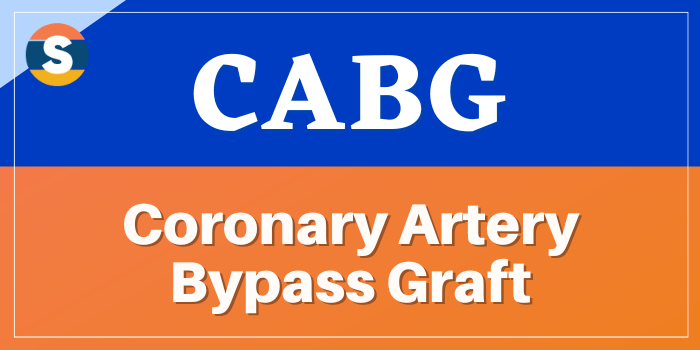
The Full form of CABG is Coronary Artery Bypass Graft. CABG is a form of bypass surgery that create new routes around partially blocked and blocked coronary arteries, permitting increased blood flow to deliver oxygen and nutrients to the heart muscle. CABG is an option for selected groups of patients with significant narrowing’s and blockages of the heart arteries. The procedure involves taking a healthy blood vessel from the patient’s arm, leg or chest and connecting it beyond the blocked arteries in the heart. Coronary Artery Disease (CAD) develops because of hardening of the arteries (atherosclerosis) that supplies blood to the heart muscle. Diagnostic tests prior to and after Coronary Artery Bypass Graft include the Electrocardiogram (EKG), echocardiogram, stress test, and coronary angiography. Although CABG doesn’t cure the heart disease that caused the blockages (coronary artery disease or atherosclerosis), but it can ease symptoms, such as shortness of breath and chest pain. For some people, this procedure can improve function of the heart and reduce the risk of dying of heart disease. Even with CABG, a person needs to make lifestyle changes after surgery. Medications are prescribed routinely to lower the blood cholesterol, reduce the risk of developing a blood clot and help the heart function as well.